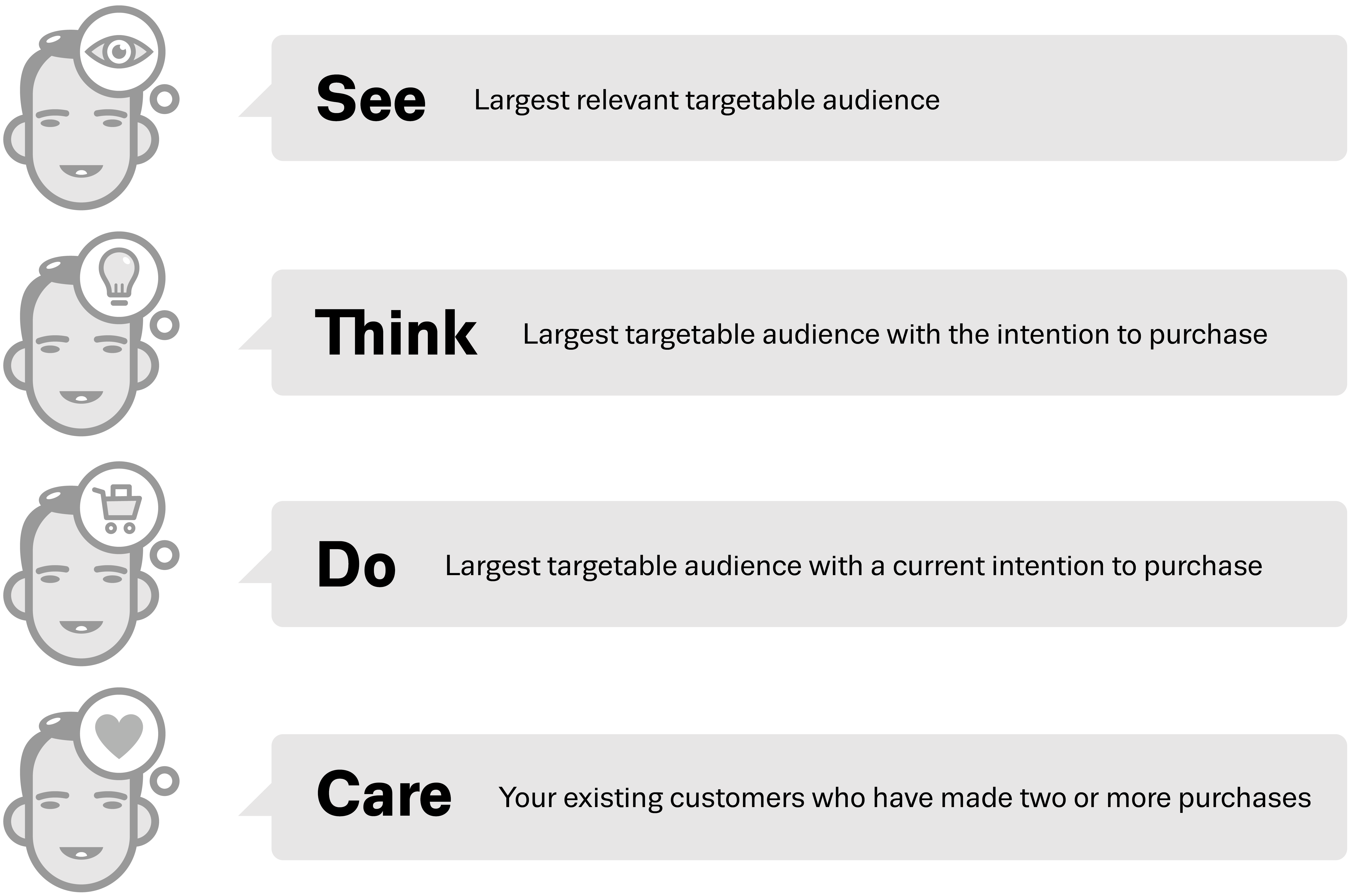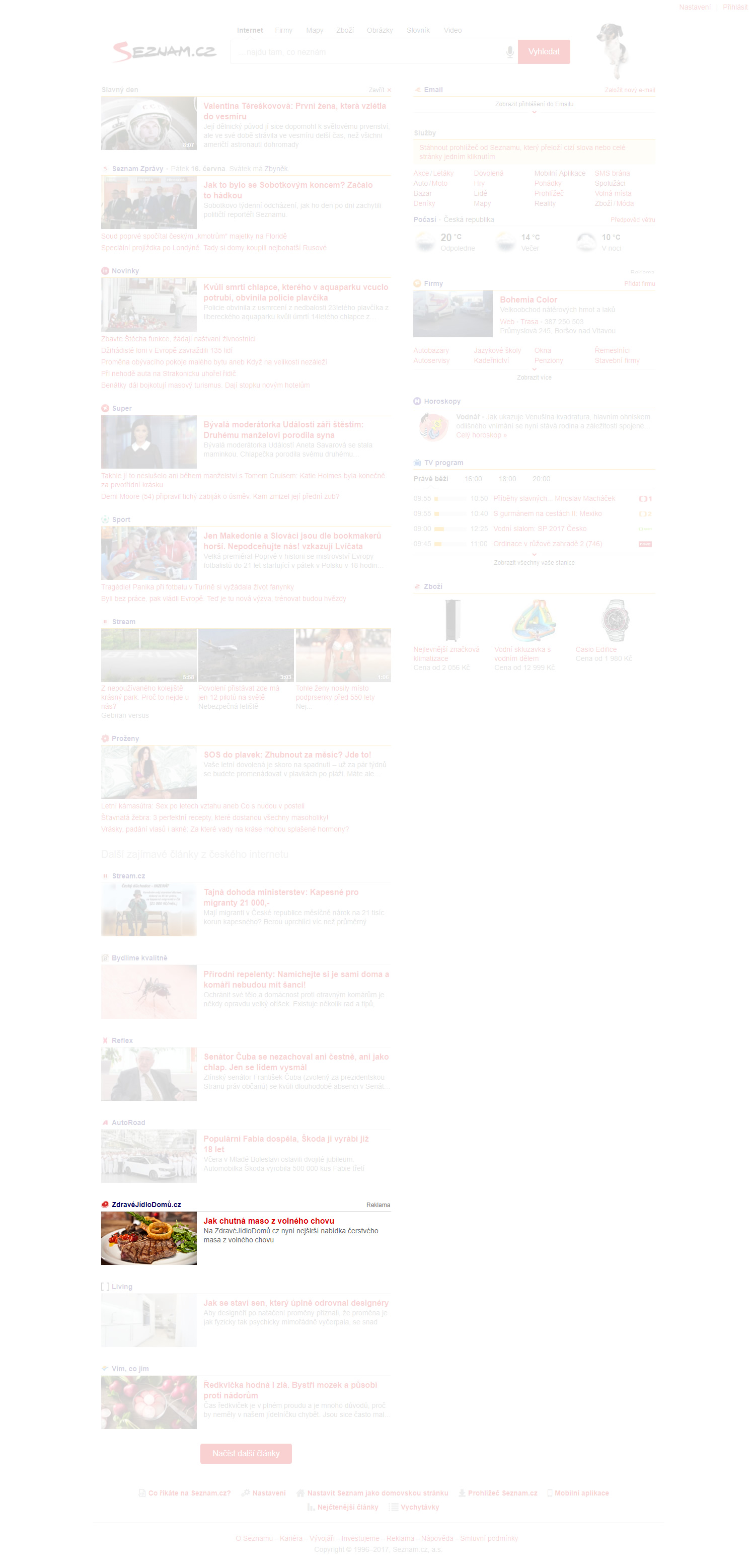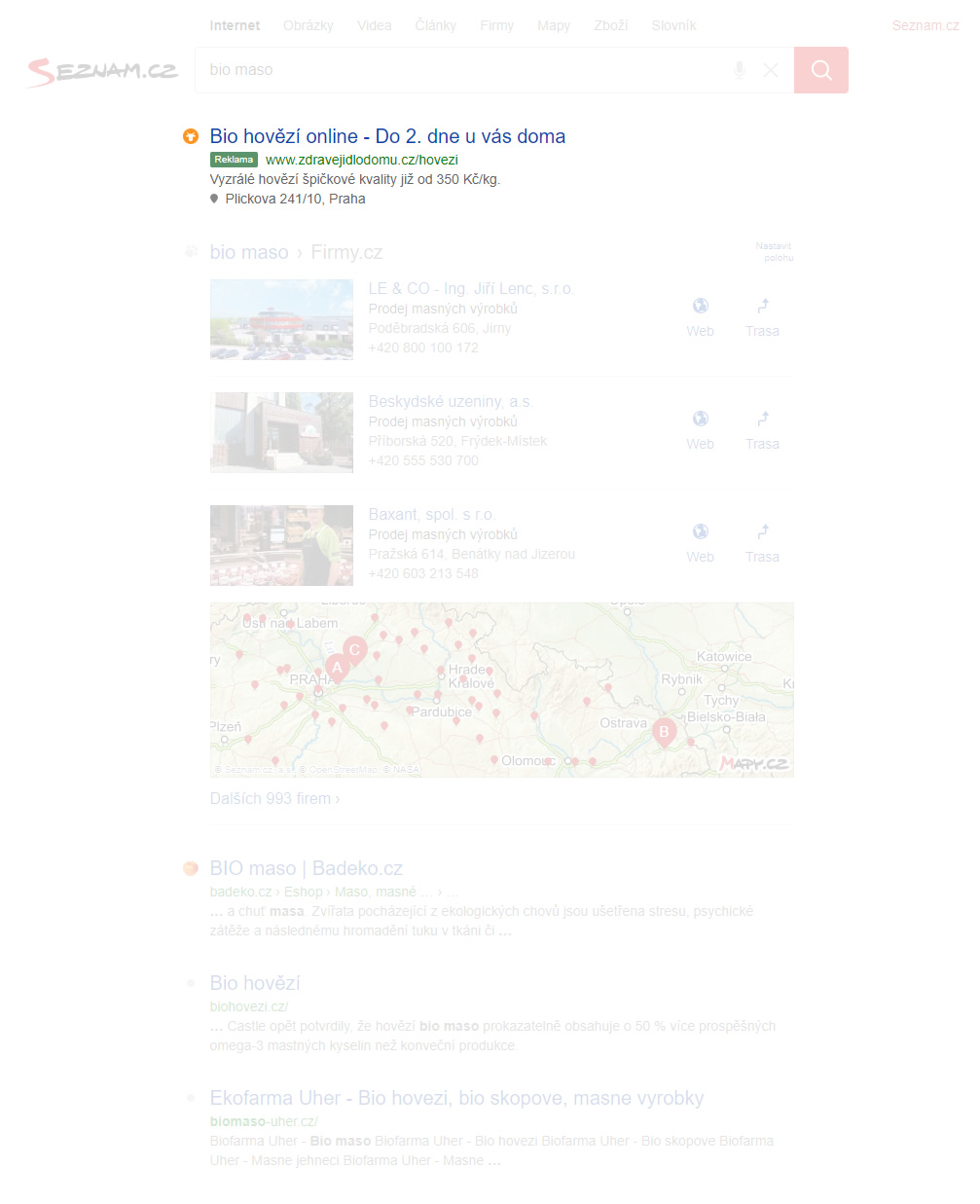SEE, THINK, DO, CARE
The STDC (See – Think – Do – Care) framework was presented in the Czech Republic for the first time by its creator, Avinash Kaushik. The methodology deals with comprehensive campaign planning, from awareness raising (brand campaigns) through getting the potential customer interested and performance strategy up to customer care. With STDC, the marketer can properly plan the campaign and its targeting and message content, and focus on the right evaluation metrics.
To devise a comprehensive marketing strategy, allocate the budget logically among all types of media, estimate the performance for a given investment, schedule the investment for a given period and to schedule the actual period.
So what does it boil down to? All it is about is a common task assignment by the boss to the reporting employee, by the firm to an agency, and by the agency to a supplier. Does the assignment contain too many unknowns? That’s where you and your expertise come in ... and your sense of reality.

Smart Planning of Marketing Campaigns
- Comprehensive Planning of Marketing Strategies
- Making the Best Use of Advertising Tools, Services and Formats
- Logical Alignment with Other Marketing Activities and Their Mutual Synergies
- A wider view on what we are targeting the customer with.
This is not the only aspect where the See Think Do Care (from here on STDC) framework can be of effective help. The framework also has its use across both online and offline advertising and has been detailed by many Czech and foreign websites. Avinash Kaushik wrote and lectured about it in 2014.
Where in the STDC framework does advertising on Seznam.cz stand? Read more to find out.
What is STDC?
It is a logical breakdown of your customers into four principal groups (See, Think, Do, Care), each of which is currently in a different stage of the buying process. Someone may be looking for a trip to the sea and somebody else is just considering buying a holiday. This must be reflected accordingly in communication.
From our surveys*, it follows among other things that:
- buying on the Internet is not a straightforward affair; most people (92%) look for a product on various websites (search engines, comparison services, discount servers, etc.) before settling on a particular store to shop at;
- 41 % of users perused various Internet stores prior to their purchase;
- 59 % of users do not start their shopping in a search engine – these need to be approached elsewhere as well;
- 53 % of users have the experience of not actually having been on a shopping trip but still having been lured by displayed adverts; for most of them, this happened only rarely, but 10% experience this on a regular basis.
* Source: Výzkumník | Seznam.cz
STDC focuses on audiences as opposed to advertising formats. With STDC competence, we can not only define and break down the audiences, but also decide how and using what channels to best approach them and then what to evaluate.

For each of the four principal groups, you'll also choose the addition to the definition of the audience you want to approach the matching message, advertising format, targeting, destination URL and metrics. These five aspects are detailed using examples for each of the four phases below.
Let’s have a look at examples of each phase.

Do we know who our largest relevant and targetable audience is?
Example 1: We are a health food shop. Our largest relevant and targetable audience is people who live a healthy lifestyle.
Example 2: We are a shoe store. Our largest relevant and targetable audience is people who need shoes.
Not all these defined groups may even know us as yet. At this stage we should be capable of presenting our brand to them in an appropriate manner.
Show and inform
So what says more than a thousand words?
Yes – visualize; use banners, and let them be nice and interactive. And what says more than even a thousand banners? A video.


SEE
Advertising format:
Video in various formats,, banner space, non-standard formats, Rich media,
Seznam naplno (firm profile format)
Metrics:
Number of impressions, number of views, hits – number of users approached, price per view, price per impression, frequency
Targeting:
Maximum impact – without targeting, sociodemographics (men, women, age)
Destination URL:
Not so significant, may be a special destination URL (e.g. a landing page that expands further on the information mentioned in the ad)

Do we know who our largest relevant and targetable audience is?
Example 1: We are a health food shop. Our audience with the intention of buying is those who are interested in bio/eco food.
Example 2: We are a shoe store. Our audience with the intention of buying is people who already follow seasonal trends and are interested in shoes.
All these defined groups know us already. At this stage they are considering whether to purchase the product specifically in our store.
Let the customer find out more
Where can the customer find the most relevant information? On your own site ...
To bring the customer to your site, use formats with a higher clickthrough rate and convey through them the message that people are welcome to visit your site. Such formats may include programmatically bought banners that can be targeted very effectively, or native ads.


THINK
Advertising format:
Banner, text ad in Sklik, PR article, native ad, native ad in Sklik
Metrics:
Number of clickthroughs, cost-per-click, page views of PR article
Targeting:
Interests of users, retargeting, lookalike audience, site themes
Destination URL:
Content section of the site, product details, PR article (if there is no suitable landing page)

Do we know who our largest relevant and targetable audience is?
Example 1: We are a health food shop. Our audience with the intention of buying is those looking for a specific product that we sell.
Example 2: We are a shoe store. Our audience with the intention of buying is people who are currently looking for specific shoes.
Simply find and buy
If you want to buy a specific product, you search for it or you visit a commodity server.
To get the customer to buy, use formats with high conversion rates that best match the demand for a particular product. Searching, product adverts or the Zboží.cz website are all the right choices.


DO
Advertising format:
Search (Sklik), product ads (Sklik), Zboží.cz, Firmy.cz, Oborové služby Sreality.cz, Sauto.cz, Sdovolená.cz
Metrics:
Conversion count, cost per action (CPA), share of costs in revenues
Targeting:
Keywords, retargeting, dynamic retargeting (DRTG), numbers of those interested in purchasing, product ads in Sklik
Destination URL:
Product detail, product category page

Do we know who our largest relevant and targetable audience is?
Example 1: We are a health food shop. The audience who made more than two purchases in our store deserves to be the first to know about our events.
Example 2: We are a shoe store. The audience who made more than two purchases in our shop deserves a loyal customer card and regular rebates.
Your customers deserve care. Customer care and how to handle it is mainly up to the company.
To be rewarded for loyalty
If you want to care for your customer, serve them with the most relevant, ideally personalised content.
You can remind them that their product is going to reach the end of its life or simply get used up (contact lenses...) and they will need more of the same. Use formats capable of targeting a specific individual (e-mail).

CARE
Advertising format:
Own direct mail, social networks
Metrics:
Repeat purchases, activity in social networks, number of times the newsletter was opened
Targeting:
Retargeting, customer matching, newsletter
Destination URL:
According to message content